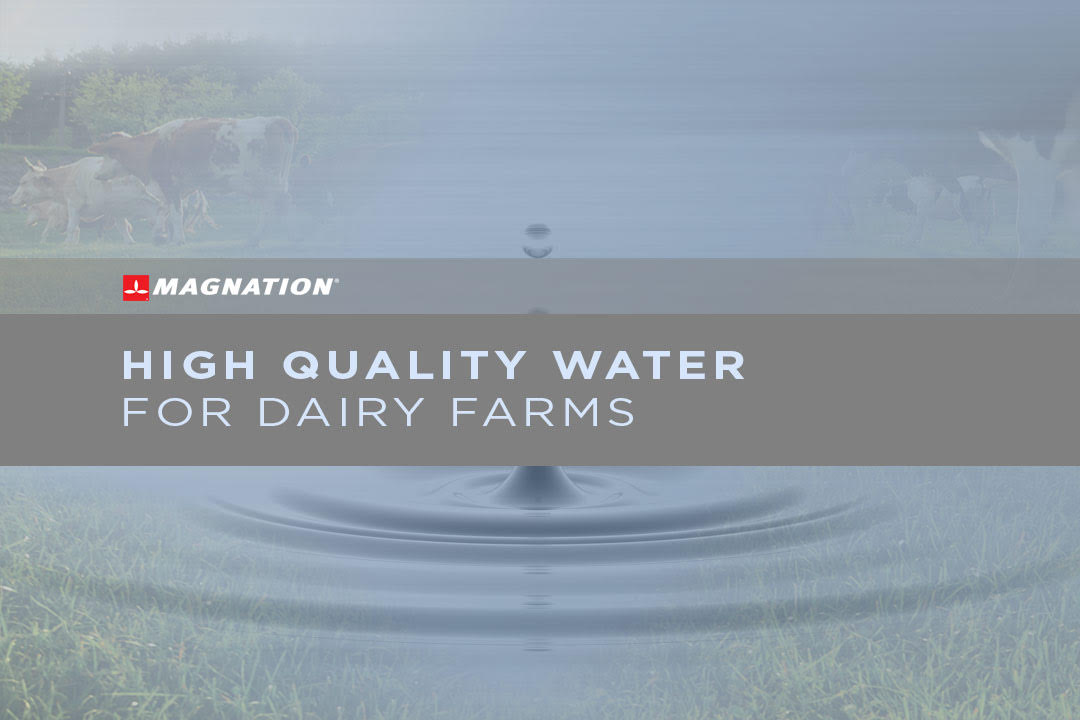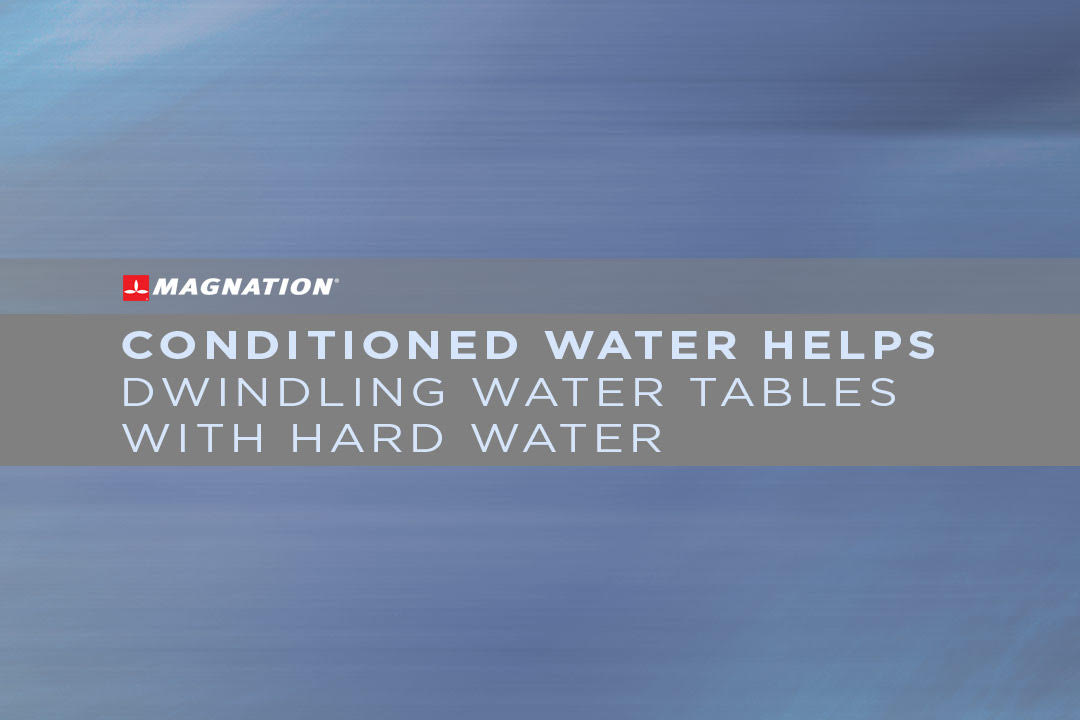
Magnation Technologies Encourage Sustainable Irrigation for Turf
Record-breaking drought has heightened the challenge that turfgrass managers face with maintaining high quality turf. However, sustainable irrigation provides a solution for the challenge. Sustainable irrigation adheres to a fundamental tenet: Water consumption does not exceed water availability.
Within this tenet, sustainable irrigation practices account for:
- Drought-resistance
- Climatic conditions, and
- Water conservation.
Turfgrasses require water for growth and survival. For turf management, a well-designed sustainable irrigation system promotes the growth of turfgrass while improving soil health. Along with requiring less water, applying sustainable irrigation also conserves energy and reduces operating costs.
Turfgrass Fundamentals Help with Understanding Irrigation Requirements
Turfgrass offers value by adding essential groundcover, offering aesthetic appeal for parks and landscaping, and serving as surfaces for recreational areas. Healthy turfgrass helps the environment by catching and filtering water, holding nutrients, and preventing erosion and leaching. Turfgrasses help to regulate surrounding air temperatures through transpiration and support the growth of bacteria and other microorganisms that break down pollutants.
Parks and landscapes provide beauty while decreasing the opportunity for run-off that can occur after storms. Factors such as size, environment, and functionality impact the water conservation and irrigation strategies applied to landscapes. Unless drought restrictions prevail, those strategies align with landscape requirements and public expectations for green spaces.
Turfgrasses used for golf courses, soccer fields, baseball park outfield areas, and football fields provide natural traction while absorbing impacts. In addition, turfgrasses cool the playing field. Each benefit adds to the playing experience enjoyed by athletes of all ages and skills. Depending on the climate, recreational grasses vary from bentgrass and bermuda grass used for golf courses to Kentucky bluegrass, perennial ryegrass, and tall fescue often seen at playing fields. Each type of grass must have the ability to tolerate heavy traffic, recover quickly, resist drought and heat, provide an appealing color, and resist pests, diseases, and weeds.
No matter the climate, type of grass, or use, sustainable irrigation practices for turfgrass consider the:
- Total amount of water required for growth
- Transpirational water loss from the surface of a leaf
- Amount of water lost from the soil surface because of evaporation.
Transpiration water loss–or consumption–describes the amount of water loss from the leaf plus the amount of water evaporated from the soil. Turfgrasses use 90% of the total amount of water for transpirational water consumption. Within that amount, 1 to 3 percent contributes to metabolic processes for the grass. Evapotranspiration (ET) rates represent the total amount of water lost to the atmosphere.
Transpiration water consumption varies with the shoot and root characteristics of each species of turfgrass and environmental conditions. Grasses that have a rapid shoot vertical shoot extension rate use more water than grasses that have slower growing prostrate shoots.
Turfgrasses that have extensive, deep root systems have a higher capacity for drawing water from soil. Deep-rooted grasses are more drought tolerant because of the greater capacity for uptaking water from soil. However, in some instances, they may require more water than other grasses. While tall fescue and Kentucky bluegrass provide superior drought resistance because of the depth of rooting, tall fescue uses more water. Bentgrass has a shallower root system but provides the quality needed for golf course putting greens. Because temperate and subarctic climates may have less soil moisture, cool-season turfgrasses have higher water requirements than warm-season grasses that flourish in tropical and subtropical areas.
Sustainable Irrigation Covers Soil Health
Soil type and texture impact the infiltration and retention of water by turfgrasses--and therefore, affect water use and the quantity and frequency of irrigation. Sandy soils that have large particle sizes provide better drainage but hold less water. In contrast, clay loams and silt soils have fine particle sizes, hold more water, but–because of absorption–offer only 30 to 35% of total water for plants. As a result, fine-textured soils require deep, infrequent irrigation.
The amount of compaction also affects soil infiltration, water holding capacity, and water use. Compaction increases the bulk density of soil, water retention properties, and the strength of the soil. However, compaction also cuts the ability of soil to aerate and provide the oxygen needed for root growth.
Sustainable irrigation practices maintains the soil moisture within the available water capacity or a level between the permanent wilting point but below the field capacity of the soil. The permanent wilting point equals the moisture content of soil that causes turfgrasses to wilt and fail to recover even when provided with sufficient soil moisture. At the opposite end of the scale, field capacity represents the water remaining in soil after thorough saturation and after the water has drained freely for one or two days.
Soil texture, the presence and amount of rock fragments, soil depth, soil layers, compaction, the amount of organic matter in the soil, and salt concentrations impact the available water capacity. Because sands, clay loams, and silt soils have small pores that restrict drainage, fine-textured soils have higher available water capacity. The larger pores seen with coarse-textured soils allow drainage and result in lower available water capacity.
Organic matter in soil increases the ability to hold water for use by turfgrasses while improving soil structure and increasing pore size. As a result, soil infused with organic matter has increased infiltration. Water moves easily through the soil and the available water capacity increases.
In contrast, compacted soil decreases the pore volume in soil and reduces the amount of water that the soil can store. Since compaction crushes soil pores, the soil holds water that turfgrasses need at the permanent wilting point. High concentrations of salt in soil reduce the available water capacity.
Magnation Water Technologies Support Sustainable Irrigation
Sustainable irrigation practices promote soil infiltration, maintain the available water capacity of soils, and reduce evaporation. Products offered by Magnation Water Technologies support sustainable irrigation for cool-season and warm-season turfgrasses by conditioning and correcting the balance of water. Rather than use chemicals for conditioning water, vortexing, centrifugal force, and magnetism guide the design of Magnation’s products to optimize water.
Magnation Turbulator
As a result, installing products such as the Turbulator, Aquabolt, Rainbolt, and Turfbolt reduces evapotranspiration while balancing calcium and magnesium ratios. The devices easily connect into irrigation systems and promote uniform soil infiltration while washing out salts by using magnetic fields to condition water. The increased permeability of soil lessens compaction and improves the availability of soil moisture for turfgrass root uptake. Turfgrass managers such as Brian Prine, Director of Maintenance, Operations, and Transportation for the Fruitvale School District in Bakersfield,
MAGNATION TURFBOLT
MAGNATION RAINBOLT
MAGNATION AQUABOLT
California found that soil moisture retention increased with the installation of Magnation’s products and that the need for irrigation decreased for shallow-rooted and deep-rooted grasses.
A case study performed by the Blackhawk Country Club showed that the aesthetic appeal of the golf course improved through turf quality, density, and color under severe drought conditions. With the installed Aquabolt generating nanobubbles, the water absorption rates of soils increased while Magnation-treated areas received 10 percent less water. Along with decreasing the amount of salts in the soil, the conditioned water increased the solubility of nutrients and stimulated aerobic microbial activity. For more information about how to achieve sustainable irrigation through Magnation’s products, contact a water conditioning specialist.










Comments
Add Comment